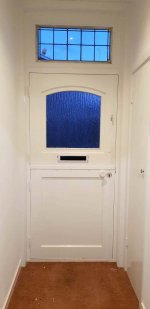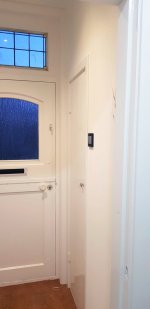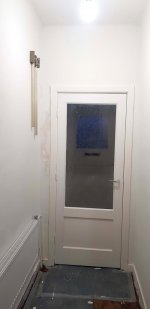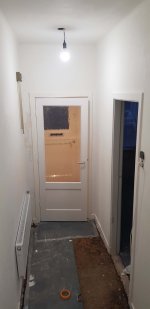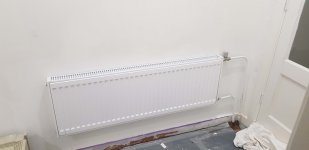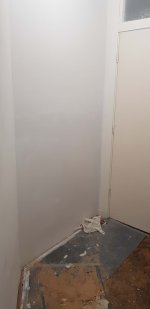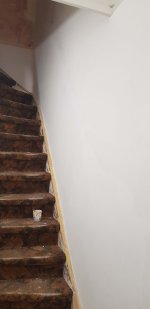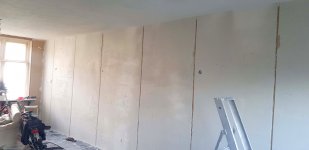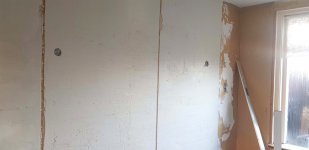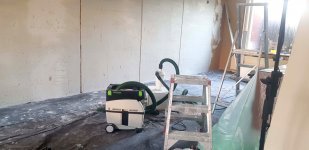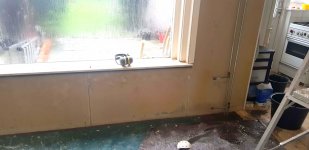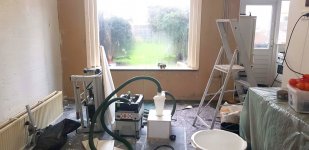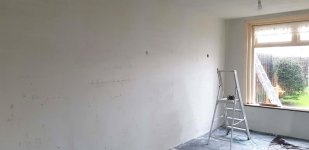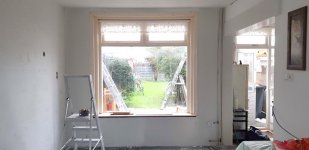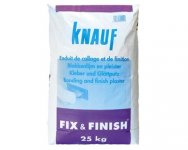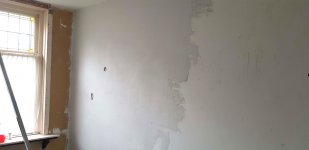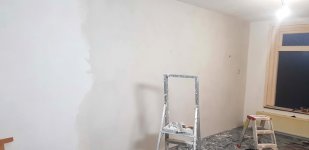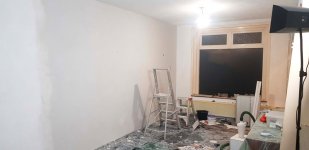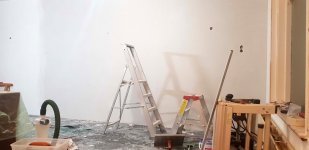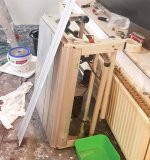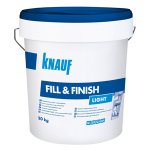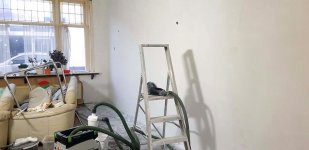I moved on to the living room. This was a lot of work. Wallpaper everywhere, and sometimes 4 layers thick. There was one layer in it with a paper that was waterproof, so I could not remove it by just making it wet and dissolve the glue, but I had to practically chissel it all away with a putty knife. The long wall alone took me 2 days just to get the paper off. But I was left with a good surface of drywall.
When originally installed, all the drywall was nailed though, and sometimes nails work themselves loose over time. There was a lot of movement in the boards so I got a pack of those black drywall screws and screwed it all tightly down. I also painted all the old nails with an oil based primer to prevent them from rusting from water in the plaster.
By the way, here is a picture of the room looked. This picture is 10 years old , but it still looked more or less the same. Some things were long gone though, like the book case and the CTL 22.
That wallpaper on the wall was originally as white as the paint of the window frame. That's what you get with two heavy smokers as parents.
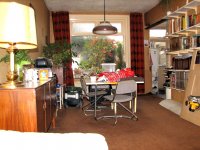
Removed everything. I'm left with a wobbly but workable surface. Screwed everything tight.
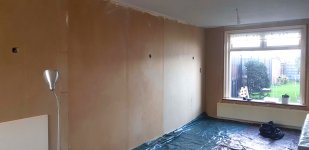
Then it was time to apply the primer, this is the yellow stuff which means it is for porous surfaces to regulate their suction. If you don't do this, the drywall will suck up lots of water when you apply the plaster, and your plaster will "burn" as they call it, it won't harden properly because it doesn't have enough water anymore. You can just roll it on, and make sure to saturate the surface entirely.
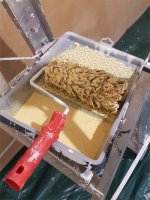
It dries quickly and you're left with a nice yellow wall. Time to place the 10 mm plaster profiles which ensure your layer gets the proper thickness. And place tape over the seams between the drywall boards.
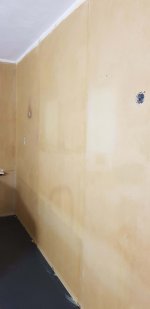
I found a problem here though, the boards were so wobbly, that at one place they stuck out 10 mm beyond the profiles. Time for a little surgery. I made an incision with the multimaster so I could take off the drywall in the spot that was too high. Then I used the EHL65 planer to cut away 15 mm from the wooden supports underneath, and placed the boards back. Now everything fits.
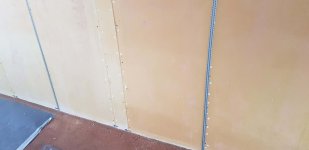
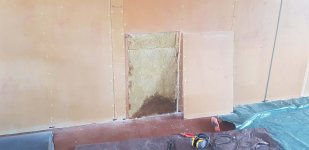
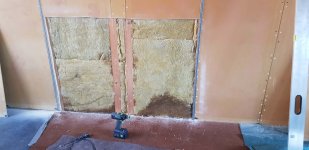
So, now after 3 days of preparation it was finally time to start plastering. It was also the first time I got to use the new-to-me Protool MXP 1602 mixer I bought for this job. Suffice it to say, it performed flawlessly, with its 1500 watt motor it has all the power to make mixing a full bag of plaster a breeze. So much better than a mixing rod in a drill. I am really glad I got this tool.
It is perfectly balanced, you can just set it standing up on the mixing rod and it will stay there.
I have this 45 liter bucket, and that is enough to hold one bag of 25 Kg plaster. For one bag you have to add 16 liters of water. First the water in the bucket, then you pour in the plaster, and you let it sit for 5 minutes so it can "drink" as they call it. This improves the mixing result. And then you mix with the machine for 5 minutes until it is one lump-free mass. The mixer has 2 speeds, you start slowly in gear 1 for the heavy work, and when you don't see any dust anymore you can go to gear 2 which makes it all a lot easier.
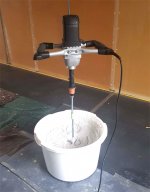
The necessary tools laid out. A very handy step to reach the top of the wall.

A close up of the tools. I have to describe them, I got no clue how you call them in English.
1 - trowel to put plaster from the bucket on your board.
2 - board that holds the plaster.
3 - thingy that scrapes the plaster from your board on the wall.
4 - long straight edge to smooth your plaster on the wall.
5 - the knifes you use to plaster everything smooth in the end.

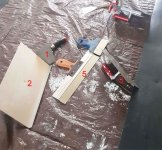

 Fast forward a couple of months. So little time to work on my home, on average maybe 10 hours per week. Entrance all done and walls and wood painted. To the right of the door there's a little closet for the gas and electricity meters, and it's front was completely ruined by all the nails of the wainscotting. So I put a new layer of 4 mm multiplex over it.
Fast forward a couple of months. So little time to work on my home, on average maybe 10 hours per week. Entrance all done and walls and wood painted. To the right of the door there's a little closet for the gas and electricity meters, and it's front was completely ruined by all the nails of the wainscotting. So I put a new layer of 4 mm multiplex over it.